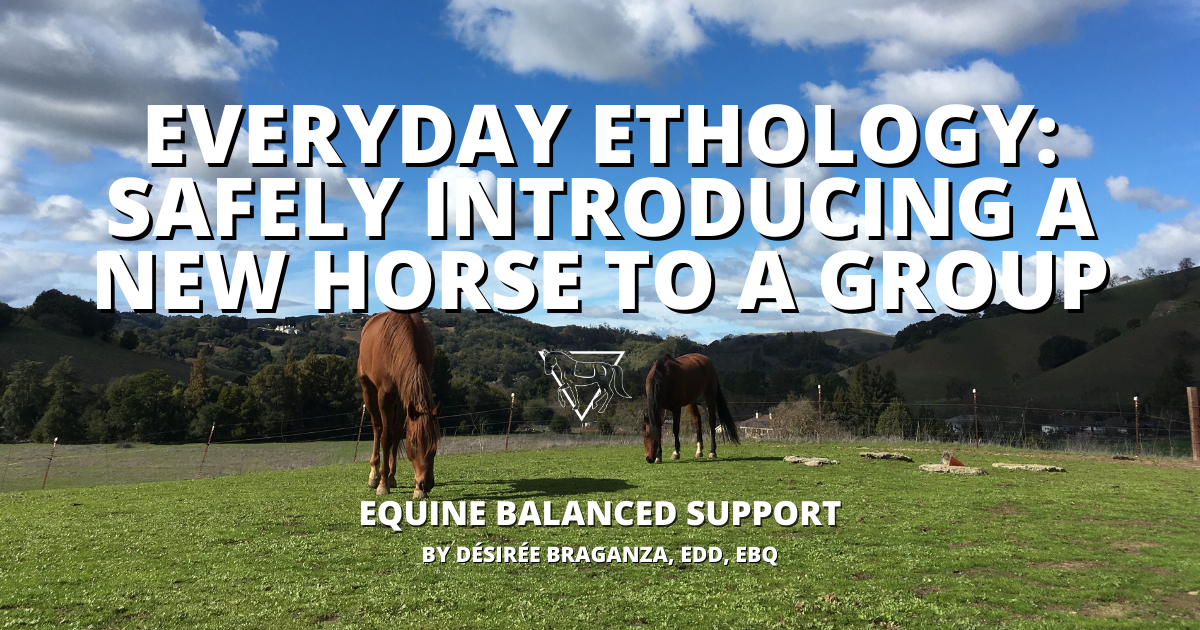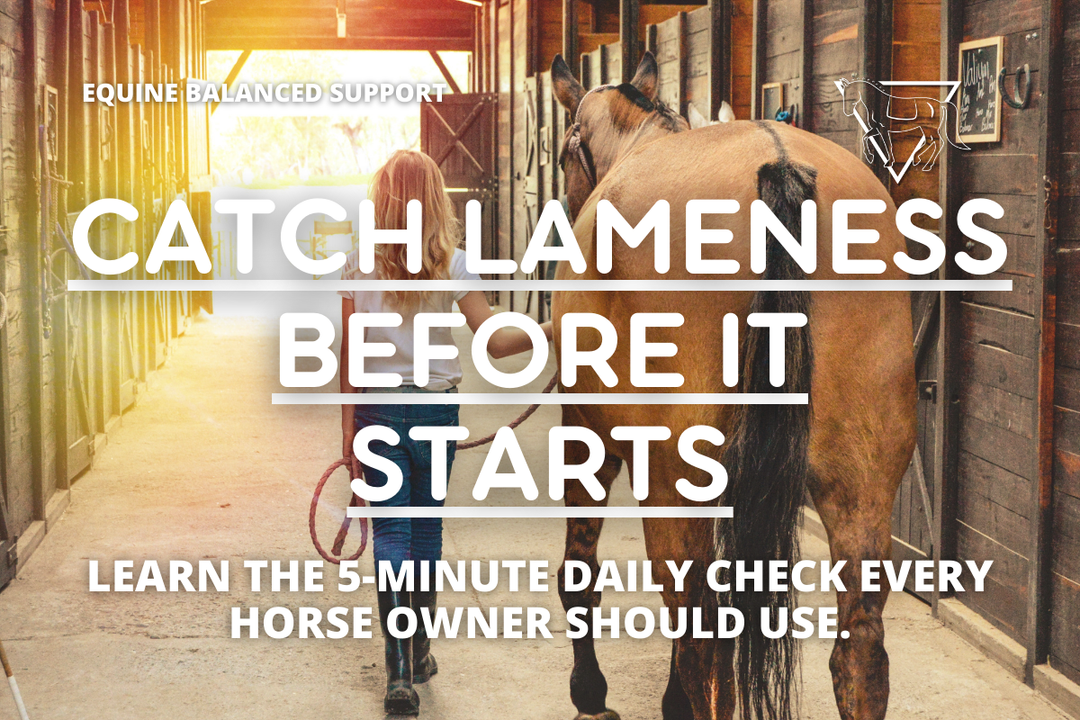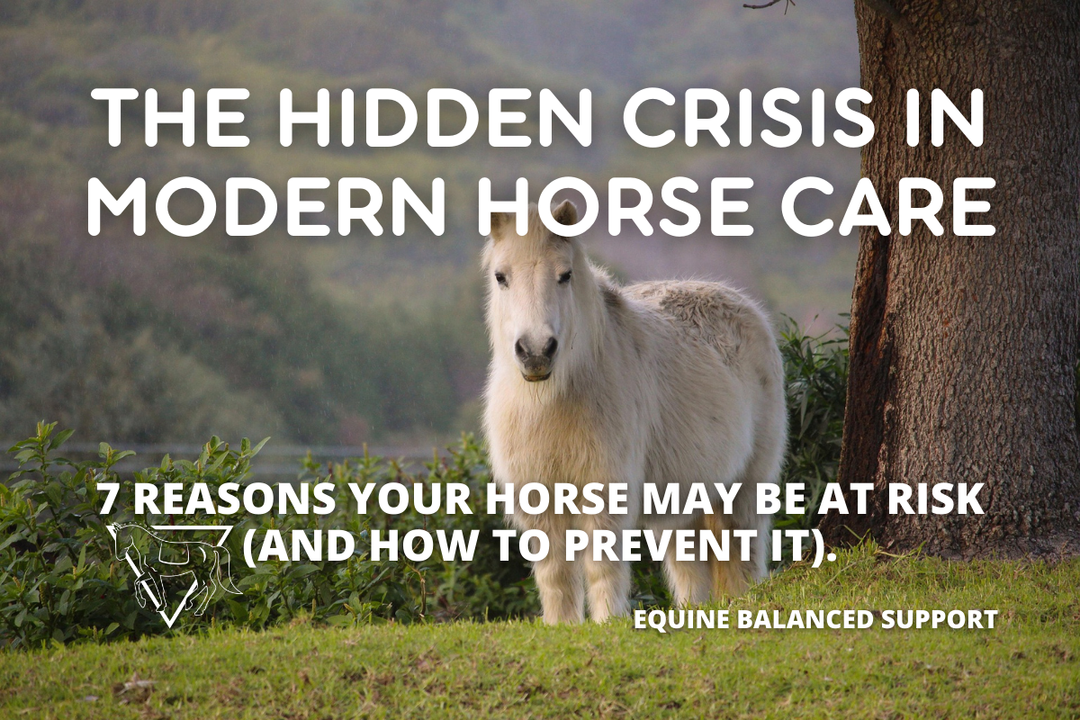Everyday Ethology: Safely Introducing a New Horse to a Group

Everyday Ethology: Safely Introducing a New Horse to a Group
By Désirée Braganza, EdD, EBQ
Q: A client recently rehabbed a horse who had their thigh muscle bitten through by another horse during a herd introduction. After multiple skin grafts and nine months of box rest, the horse is sound again. — Anonymous, US
A: Ouch! I’m relieved to hear your client’s horse has recovered. Introducing horses to a new group can be tricky, and your question highlights how important it is to approach these dynamics thoughtfully.
Why Domestic Herds Are Different
Wild herds often serve as the context for understanding equine behavior, but they’re fundamentally different from domestic groups. They are typically made up of regional breeds and fluid membership—some members leave to form new bands, while others may return to their original groups. The overarching goal of a wild herd is collective safety, which often leads to minimal conflict when their needs (food, comfort, reproduction, exploration) are met.
In contrast, domestic groups are often made up of horses with diverse social histories, ages, breeds, and temperaments. Limited space, mixed genders and resource competition create challenges. For example, geldings—who don’t exist in the wild—often suppress certain natural behaviors, and all-mare groups can lead to hormonal imbalances or frustration. These differences mean domestic herd management is an ongoing, active process, especially when introducing a new member.
Steps for Introducing a New Horse
There’s no one-size-fits-all approach to introductions, but these guidelines can help you create a safe, low-stress transition. Always tailor the process to your horse’s needs and work with your veterinarian or a behavior specialist when needed.
1. Start with a Fence-Line Introduction
Let the new horse interact with the group over a safe barrier, such as sturdy mesh fencing. This allows everyone to observe and adjust to each other without the risk of physical injury. Some horses may need only a few days; others may take weeks or longer. Let your horse set the pace.

2. Assess Individual Histories
Consider each horse’s past experiences. Horses who have been isolated, injured, or have a history of social challenges may need extra time and care. Watch for signs of fear or defensiveness, like guarding their body and avoiding interaction.
3. Supervise Initial Meetings
When you feel the horses are ready for direct contact, start with short, supervised sessions. Choose a safe, open space with no corners or narrow areas where a horse could get trapped. Have another experienced person with you to help.
4. Provide Ample Space and Resources
Lots of space is best during introductions. Horses need room to move away if they feel threatened. Scatter food piles and place water sources far apart to reduce competition.
5. Be Prepared to Intervene
It’s common to see minor nipping, squealing, or posturing as horses establish boundaries. However, repeated charging, bearing down with force to bite, or resource guarding indicates a problem. Step in if needed to ensure no horse gets hurt.
Recognizing Unsafe Behavior
Not all behavior during introductions is safe or healthy. An overly assertive horse might repeatedly lunge at the new member, bite with excessive force, or corner them away from resources - these behaviors often indicate underlying issues like trauma, pain, or limited socialization rather than natural leadership.
When observing introductions, look for signs that one horse is disrupting the group’s synchrony. While most horses move fluidly together like a school of sardines, an overly assertive horse may move counter to the group, striking at odd angles or forcing others away from the collective. This is a safety risk for all.
The idea that horses will “work it out” isn’t always true. Some horses might not have had prior opportunities to practice social skills. They may not be able to integrate peacefully and may require human intervention or alternative arrangements.
When Group Living Isn’t the Answer
Not every horse thrives in a traditional group setting, and that’s okay. Some prefer a smaller group, a single companion, or their own space with fence-line interaction. Your horse’s safety and comfort are a priority over idealized herd living.
Options for these horses include:
- Pair bonding with one compatible horse.
- Living alone with the ability to interact with others over a fence.
- Smaller groups with carefully chosen companions.
The goal is to create an environment where every horse can feel secure and express natural behaviors safely.
Keeping Yourself Safe
Herd introductions can be unpredictable, so your safety matters too. Carry a lunge whip quietly as a tool to set boundaries if needed. Never put yourself between horses during an introduction, even if they seem calm. If you feel unsafe, use the whip to create space - but never strike a horse.
A Few Final Thoughts
Introducing a new horse takes time, thought, and a willingness to adapt. It’s completely fine to adjust your setup if something isn’t working. The goal is always the same: to create a safe, happy environment for everyone involved.
Further Reading and Resources
If you’re curious to learn more about horse group dynamics, these resources are a great place to start:
- Horses in Company by Lucy Rees
- Feh, C. (2005). Relationships and communication in socially natural horse herds.
- Ransom, J.I., & Cade, B.S. (2009). Quantifying equid behavior—A research ethogram for free-roaming feral horses.
- To peek in on semi-wild horses, check out Alberta Wild Horses.
About the Author
Désirée Braganza, EdD, EBQ, received her equine behaviorist qualifications from the Natural Animal Centre, then located in the UK and South Africa. As a member of Bodhi Horse Practice, she collaborates with equine professionals worldwide on research projects specific to experiences of domesticated horses from an ethological lens. She is a horse mom, a rider, and has cared for and supported numerous horses over the years. Désirée recently relocated from Northern California and is now based in Athens, Georgia, USA. She consults internationally in-person and virtually.





Leave a comment